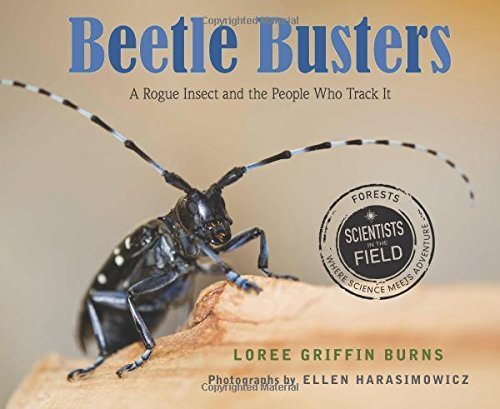What do you think?
Rate this book


Hardcover
First published October 7, 2014
My Thoughts:
I enjoy this series and I suspect young science enthusiasts will as well.
With Beetle Busters, we learn about the damage this particular beetle causes in hardwood forests and follow a team as they try to contain the infestation. The book is full of full-color photos which makes the “sciency” talk a little easy to follow for those of us not so “sciency”. In this book, children will learn about the insect (and eggs, etc) as well as the dangers it poses to our environment. They will learn about the beetle and also how to recognize infested trees, etc.
Recommended for middle graders, say ages 8+
For Students & Teachers: